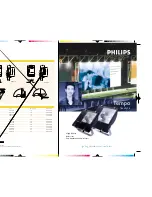
12
MAC Viper Wash Safety and Installation Guide
DMX data link
The MAC Viper Wash has 5-pin locking XLR sockets for DMX and RDM input and output (see Figure 7 on
page 11). The default pin-out on both sockets is:
• pin 1 to shield
• pin 2 to data 1 cold (-)
• pin 3 to data 1 hot (+).
Pins 4 and 5 are not used by the fixture but are bridged between input and output sockets. These pins can
therefore be used as a pass-through connection for an additional data signal if required.
Tips for reliable data transmission
• Use shielded twisted-pair cable designed for RS-485 devices: standard microphone cable cannot transmit
control data reliably over long runs. 24 AWG cable is suitable for runs up to 300 meters (1000 ft). Heavier
gauge cable and/or an amplifier is recommended for longer runs.
• To split the data link into branches, use one of the splitter-amplifiers available from Martin (see under
“Accessories” in the product specifications given at the end of this document.)
• Do not overload the link. Up to 32 devices may be connected on a serial link.
• Install a DMX termination plug on the last fixture on the link.
Connecting the data link
1. Connect the DMX data output from the controller to the MAC Viper Wash’s data input (male XLR)
socket.
2. Run the data link from the MAC Viper Wash’s data output (female XLR) socket to the data input of the
next fixture.
3. Terminate the data link by connecting a 120 Ohm, 0.25 Watt resistor between the data 1 hot (+) and
cold (-) conductors (and between data 2 hot and cold if used) at the data output of the last fixture on the
link. If a splitter is used, terminate each branch of the link.
















































